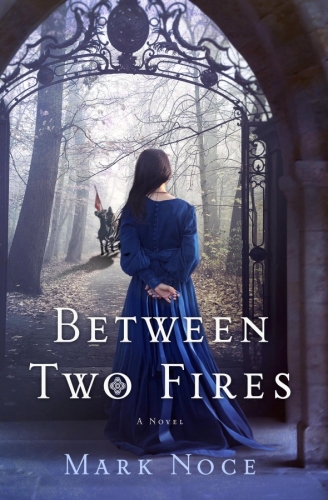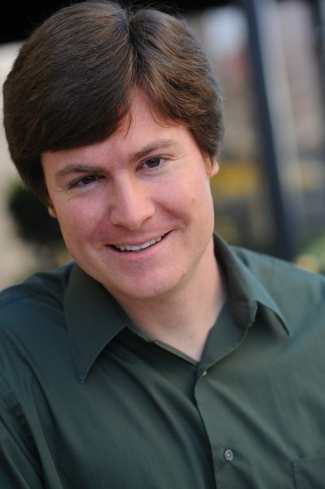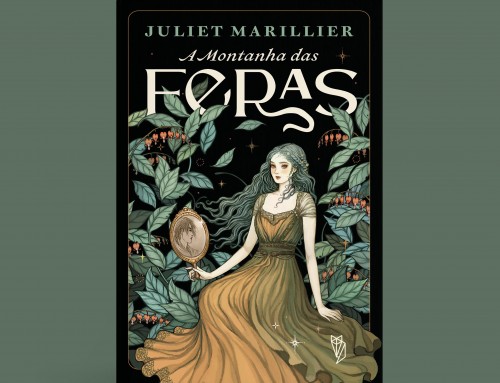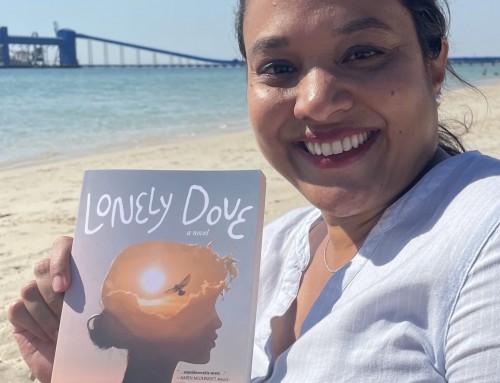
If I asked you what are the most popular settings for historical fiction these days, you might nominate the Tudor period, Regency England, or perhaps London in Victorian times. Then there’s Roman Britain, Viking era Scandinavia, Napoleonic Europe. But you don’t often find a novel set in early medieval Wales, which is odd, since that period and culture are rich in storytelling potential. Welsh mythology, captured in that treasure trove of traditional lore, the Mabinogion, is rich with drama and poetry. Welsh history is turbulent, dramatic, peopled by great heroes and bards. As a child I went through a period of being obsessed by all things Welsh – I can probably still sing some folk songs in the language and recite the longest place name in the world. I found the stories utterly captivating.
So I was delighted to receive an advance copy of Mark Noce’s debut novel, Between Two Fires, which is set in Wales in the late 6th century. The events of the story are imagined, but fit into an existing historical framework. The narrator, Lady Branwen, finds herself betrothed to the Hammer King in a strategic move to unite two petty kingdoms. But there is a greater threat – Saxon invaders. And a forbidden love that threatens to unravel both political alliance and marriage. Between Two Fires will be published by Thomas Dunne Books (an imprint of St Martin’s Press) in August 2016.
Mark agreed to do an interview for the blog, and I started by asking him this:
Welcome to the blog, Mark, and congratulations on Between Two Fires – I really enjoyed it. Could you tell readers a little more about the story?
Sure, and thanks for having me here, Juliet! I want to hear some of those folk songs you sing now!
Between Two Fires is set in early medieval Wales and is the story of a young noblewoman named Branwen who must marry a man she’s never met in order to save her people. Her new husband, the Hammer King, leads the resistance against the Saxon barbarians who threaten the divided Welsh kingdoms. But things get complicated when she falls for a young knight named Artagan, and she soon has to choose between saving her people and being true to her heart. All the while assassination attempts, courtly intrigue, and the impending Saxon invasion all swirl about her as Branwen attempts to assert herself in a world full of warriors.
What drew you to the setting of early medieval Wales? What were some of the rewards and pitfalls of writing about this period?
I’m drawn to any “dark age” period in history. I don’t mean just a time where technology or people were necessarily backward, but rather an era that has largely been lost or left out of recorded history. For instance, very, very little survives from medieval Wales. In the years 500-800 AD. St. Gildas wrote the longest surviving text from the era, and it’s barely a few dozen pages! Couple that with a handful of ruins and some oral legends, and there’s not much we can say for certain was happening in those centuries. This is where a fiction writer can really make a difference helping to bridge those gaps, extrapolating just a little further than the historians in order to give the time period shape and meaning. This is of course a double-edged sword. On the one hand an artist has a lot of freedom, but also a lot of responsibility to make a believable, even probable narrative for the backdrop of this “dark age.”
How did you go about your historical research? Have you travelled to the locations of the story?
I’ve been fortunate to travel throughout the UK and Ireland, but truthfully that only helped a little bit in writing a story about medieval Wales. The landscape both physically and socially has altered dramatically over the centuries, what with deforestation, crumbling ruins, and ancient texts getting lost over the generations. As part of my filling in of the “dark age” of this period, I only used specific modern locations sparingly. Instead, I tried to emphasize other castles and locales of which little to nothing remains today. It’s the pile of mysterious rocks or cairns on the roadside that interests me. Who built this and why? Those are the questions I often ask myself.
Between Two Fires felt to me like a blend of historical fiction and mythology, perhaps because some of the character names are taken from traditional stories. To what extent is it OK to depart from known history when writing historical fiction? How do you blend the fictional elements with real history?
Well, the beauty of writing about a “dark age” is that there’s very little certain information that someone can actually contradict, leaving me freer to make a good solid story with fewer inhibitions. Entire kingdoms rose and fell during this time period and we’ve lost even some of the names of these places and their kings. That being said, a heavy dose of common sense is my guiding light. So long as you don’t contradict the known history, such as who actually wins wars and battles or avoid putting people on flying pterodactyls, your audience mainly just wants things to make sense and for a good story to unfold (in my humble opinion).
 As a writer, I’m interested in your choice to write the novel in first person, with Branwen as the sole narrator. Were there any particular challenges for you, as a male writer, in using a first person female viewpoint? How did you go about making that female voice credible to the reader?
As a writer, I’m interested in your choice to write the novel in first person, with Branwen as the sole narrator. Were there any particular challenges for you, as a male writer, in using a first person female viewpoint? How did you go about making that female voice credible to the reader?
For me, a story grows from the first line. In this case, “Today I will marry a man I have never met.” That line haunted me, because as soon as it popped into my head I could see the entire story unfolding and I knew who Branwen was. She was in my head and had a story to tell, so I just had to let her tell it her way, so to speak. Many of her character’s mannerisms are certainly inspired by my wife, who is my secret weapon when it comes to getting good literary feedback, especially about a female protagonist. Once again, it all comes down to common sense for me. We are all human, regardless of race, creed, or gender, and so long as I hold true to that, I feel comfortable writing from perspectives that may vary from my own.
The novel is written in present tense – more common these days, but still unusual in historical fiction. Why did you make that choice? What does it add to the storytelling?
Once again, my character demanded it. I know that sounds odd, but it’s true. I fought against writing this way at first, but this is the way the words wanted to spill onto the page. I’m a big believer in inspiration and when something’s working, I try not to interfere with it. The present tense adds a sense of urgency to Branwen’s plight and because it’s not set in the past tense, there’s always a danger that every moment may be her last. Even as the narrator she has no idea how this story will unfold.
I see from the bio on your website that you have a day job is as a technical writer. Has that taught you some skills that assist you in writing fiction?
It certainly gives me an eye for editing when I work on a second draft, but I find that I have to turn off that editorial button in my head during the initial draft in order to let inspiration do its work. I’ve been fortunate in my career to work with really talented people from various walks of life and that certainly has given me unique experiences that help inspire my characters.
I’d love to hear a little more about your writing process. Are you a planner, a pantser or something in between? How long did it take you to write Between Two Fires from initial idea to completed, polished manuscript? Was this your first finished novel or do you have a heap of other manuscripts in a drawer somewhere?
Once upon a time I was a total planner, and now I’m a total panster. I need to explore the world I’m writing about on paper without preconceptions, especially during the first draft. I almost intentionally try to prevent myself from planning things out so that I can better surprise myself and the main characters. Subsequent drafts are a different story. That’s when the edits really begin, things have to make sense, dates have to line up, etc. I write my first drafts pretty fast, usually within 2-3 months max. Rewrites are a couple more months at most. I wrote plenty of other stuff before, but when I created the manuscript for Between Two Fires I knew I had something special in my hands, something worth sharing.
What has been the most rewarding thing about writing this book? What has been the most challenging?
The most rewarding part has been writing this for my wife. She’s always my primary audience, and seeing how engaged she was with the text as I wrote each chapter was just as thrilling for me. If she likes what I’m writing, then in my opinion my writing is already a success. The challenge has probably been more the marketing side that has come afterward. Don’t get me wrong, the marketing is going very well, but it’s very different from the almost effortless labour of love that the initial manuscript was. I guess I’m still trying to reconcile the artistic and business sides of the publishing business within me.
What do you enjoy reading for pleasure?
Everything! I especially love rereading a classic. Some of my favourite authors include Lawrence Durrell, J.R.R. Tolkien, J.K. Rowling, Kim Stanley Robinson, Shakespeare, Bradley, Orwell, Dumas, and the list goes on and on. I try to read 3-4 books a week, which is nothing compared to my wife as she tackles twice that number. Needless to say, we love bookshops and libraries!
I saw on your blog that there is a sequel coming up and that it sees Branwen in conflict with the Picts. Having immersed myself in Pictish culture when writing my Bridei Chronicles, I’m really looking forward to that second book. Are you still working on it, and when will it be published?
Thanks! I’m glad you’re looking forward to the next instalment. Yes, the sequel is already written and with the publisher, although there’s no release date as of yet, and there will probably be a few more revisions required. Pictish culture is another one of those fascinating subjects, because of what we do know and what we don’t know about them and their mysterious origins. The novel will of course still focus on the Welsh themselves as the main protagonists.
Last but not least, where can readers pre-order Between Two Fires? Will it be available in both print and e-book formats?
You should be able to get Between Two Fires just about anywhere and in whatever format you want (although hardcovers and e-book versions will be released first before paperbacks). The pre-order button on my website (marknoce.com) provides all the major stores and formats available in the dropdown menu (i.e. Amazon, Barnes & Nobles, Kindle versions, etc.). The official release date is August 23rd! I’ll be counting the hours until then. Thanks again, Juliet for having me on your blog!
Thank you for being my guest, Mark. I wish you the very best with Between Two Fires.
Publisher’s page for Between Two Fires: http://us.macmillan.com/betweentwofires/marknoce
Mark Noce’s website: marknoce.com


